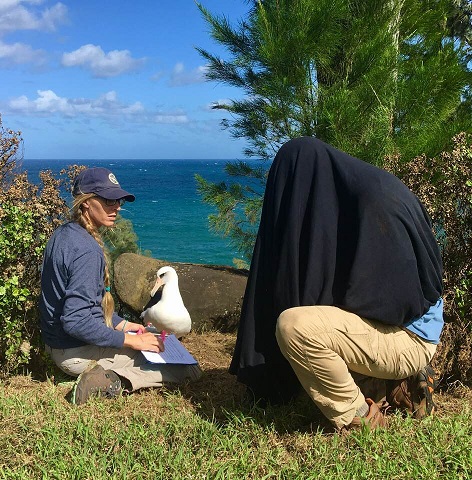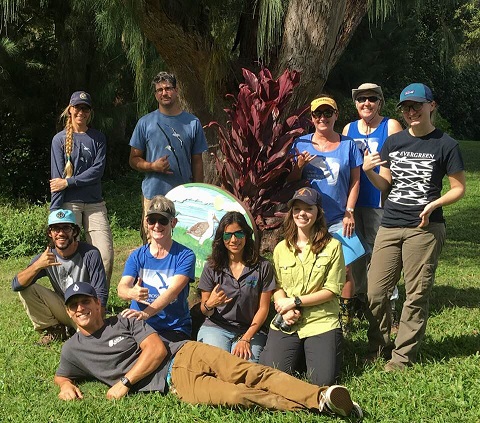Hands-on conservation of globally Near Threatened Laysan Albatrosses or mōlī Phoebastria immutabilis is continuing on the Hawaiian island of Kauai.
Recently, 16 fertile mōlī eggs were removed from incubating birds breeding within the Pacific Missile Range Facility, Barking Sands (PMRF) and given to birds deemed to have infertile eggs breeding elsewhere on the island on private properties along the north shore.
Fertility was first checked by “candling” the eggs in the field and then exchanges were made “in less than 30 seconds”.

An egg gets candled in the field by Pacific Rim Conservation biologists
The black cloth acts as “a portable darkroom where he can shine a flashlight into the egg. A fertile egg will have an embryo and a “spider” of blood vessels.”
The PMRF eggs are removed as part of an effort to reduce recruitment to the locality to reduce the chances of bird strikes with aeroplanes. The eggs are often given to female-female pairs whose own eggs are usually infertile.
The egg translocation this year was a team effort among Pacific Missile Range Facility, Pacific Rim Conservation, Kaua’i Albatross Network and private property owners.
Watch a video of a 2018 egg exchange.
Read ACAP Latest News postings about the translocation efforts on Kauai over past years.

The 2018 translocation team. The Hawaiian Shaka hand gesture is used as a greeting gesture or to express thanks
Photographs by Hob Osterlund
With thanks to Hob Osterlund, Kaua’i Albatross Network.
John Cooper, ACAP Information Officer, 28 December 2018

 English
English  Français
Français  Español
Español